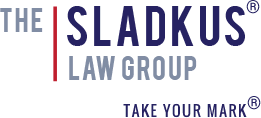Five Questions to Ask – How to Know Whether Your China Experts are Indeed Experts or Simply People Who Travel to China in First Class (With Your Money)

I publish frequently, in both English and Chinese languages. Below is my recently published article in Mandarin Chinese in one of China’s leading online IP platforms. It’s nothing sexy – just the same old plain topics about talks, tips and tools for trademarks & brands. By having published in both languages, it affords me a rare opportunity to gain insight into how each respective audience reacts to such topics.
The same topic in the US would generate roughly 200-400 views in the first 24 hours (if I were lucky); whereas in China, it could generate up to 10 times as many views. Take my below published article as an example, it received more than 2000 views in the first 24 hours in China. My last few articles received more than 5000 views in China during the first week they were published. It’s not that my writing is particularly good in Mandarin Chinese – there is simply a HUGE demand for this type of information.
There is also a big demand in the Western world to understand China’s rules and systems. The difference is, the information is somehow “filtered”. We all know it is very difficult to master the Chinese language; therefore, most Western companies, private practice attorneys, and in-house counsel rely on “experts” – i.e., lawyers who are self-proclaimed Chinese experts, or law firms with Chinese attorneys who speak good English.
However, just because an attorney is Chinese and he/she happens to speak English does NOT make him/her an expert in China’s trademark law!
The real experts are those local Chinese attorneys who sit in cubicles dealing with grouchy examiners everyday. They are, however, the “behind the scene experts” because they could not use beautiful English to advise clients directly.
In this model, the strategy formulation process occurs in a linear fashion, through emails and often with delays. This explains why people often walk away from this process feeling lost, confused and frustrated.
As outdated as the model is, it is still the dominant way to receive trademark & branding advice in China in today’s world. This explains why we still see some giant global brands making huge profits in China but their Chinese character marks are registered upside down (i.e., rather than registering a mark as “COACH”, it is registered as “HCAOC”). The real shocker here is not that China’s system is backward (although many would definitely argue this point); rather, it is the thinking that brands and law firms can still “outsource” their China work and simply hope for the best.
Here’s the quick checklist — The one handling your China (and in fact, Asia) trademarks should be able to immediately answer the following 5 easy questions. Any hesitation on their part, means you have the wrong counsel.
- what is a subclass system (bonus point: what’s special about the subclass system in Class 25 in China?)
- what is the difference between simplified and traditional Chinese characters;
- which Asian countries use simplified characters and which use traditional characters (bonus point: where in Asia should you file both version?)
- what role, if any, does common law play in China’s trademark system;
- how does one protect the look of a product in China?





